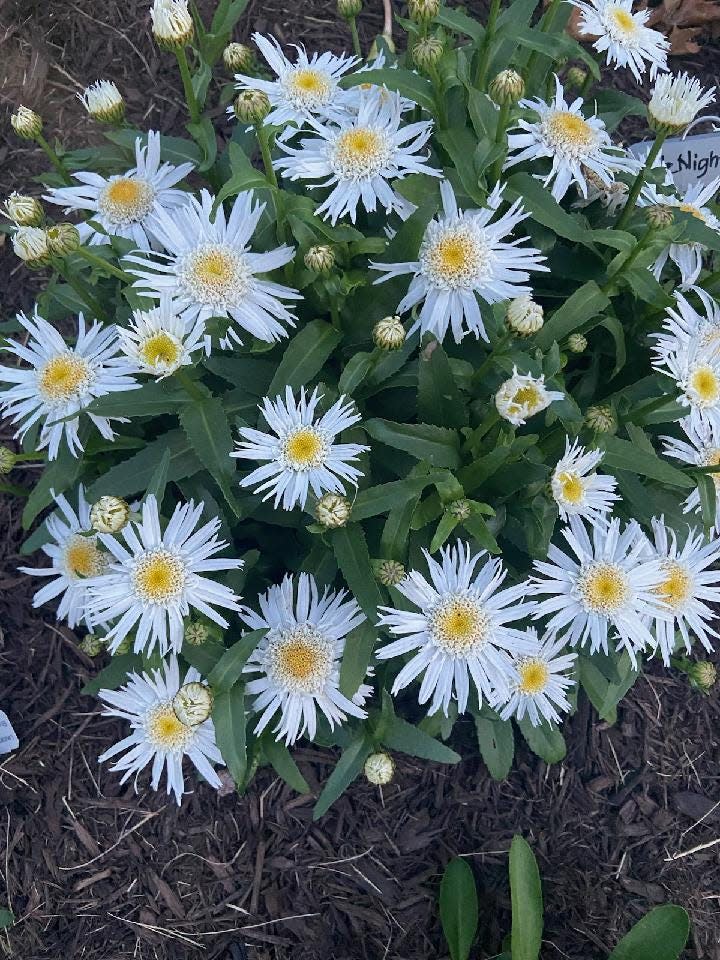Over the Garden Fence: Shasta mania
As the growing season progresses, those of us heavily laden with perennials continue to check on the health and vigor of our plants. We already anticipate division of huge, happy clumps. This reflection for me is now focused on the numerous Shasta daisy varieties tucked throughout the flower beds.
Daisies, specifically leucanthemum superbum, symbolize purity, innocence, loyal love, beauty and patience. As a kid, the roadside and field ox-eye daisies were charming. Later, new to a garden club a friend shared what was called "decoration day daisies" a bit stronger. Over the years nurseries and catalogs from growers have offered a never-ending stream of tempting large Shastas with delightful forms.

In my alphabetized plant file, the labels tucked in the Shasta pages reveal many which are no longer with me. This might prove how unsuccessful my growing efforts really are. Tags show that the following were planted at one time: "Fluffy," "La Spider," "Lacrosse," "Sante," "Marconi," "Aglaia," "Freak," "Wirral Pride," "Real Galaxy," "Real Glory," "Real Fluffy" and "Real Neat," "Whoops-a-Daisy" and "Silver Princess."
There are more. An inventory of the yard reveals that currently the following are filling spaces: "Becky," "Alaska," "Snow Lady," "Sweet Daisy Birdy," "Snowcap," "Carpet Angel Daisy," "Banana Cream" and "Luna" which are both yellow. Many are repeated because they have been divided earlier.
Division is avoided by many gardeners, but Shastas healthily spread and need division after about the third year. Dividing gives access to mature roots and plantlets.
In fall, as the plants move towards dormancy, lift the entire clump after cutting it back to 6 inches. The center will be a bit woody and unproductive. Discard this portion. The plant can be teased apart starting at the edges.Doing this increases the lifespan. Pot or replant in new areas or share them.
A huge Montauk daisy that did well for two years disappeared last year. This week a new start was planted. This daisy blooms toward early fall. One of the newest Shastas is the "Carpet Angel" daisy. The blooms have a crested center and long, shaggy white petals. According to one nursery, it is the first and the only ground cover daisy in the world.
Only 6 to 8 inches high, it spreads to nearly 20 inches because of basal branching. There are hordes of flowers. Its fascinating blooms sit tightly on foliage. It really hugged the soil surface last season newly planted. This season it seems to be exploding and is so delightful.
There are a few that would be desirable to bring back to my flower beds. "Wirral Pride" and "Aglaia" are two. A new discovery, "Marshmellow," hovers in my sights. Until then, there are plenty of daisies to be enjoyed.
Mary Lee Minor is a member of the Earth, Wind and Flowers Garden Club, an accredited master gardener, a flower show judge for the Ohio Association of Garden Clubs and a former sixth grade teacher.
This article originally appeared on Bucyrus Telegraph-Forum: The wide variety of Shasta daisies and tips for their care

